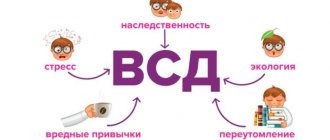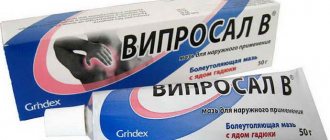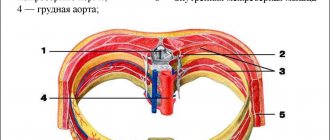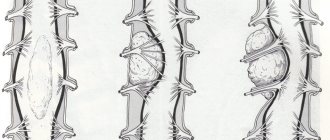What ointment to use for intercostal neuralgia? This question is often asked by those who are faced with such an unpleasant and painful illness. Intercostal neuralgia is a very unpleasant pathology that develops along the intercostal nerve, as a result of its irritation or compression. Most often, older people experience this disease, but it is rare in children and young people. For this problem, treatment involves eliminating the cause that provoked the disease, for which ointments and tablets are used. Which ointments are more effective for intercostal neuralgia?
What is the cause of the disease?
Intercostal neuralgia is a syndrome of reflex origin. It appears due to compression or irritation of the intercostal nerve. Most often, attacks appear in those patients who have advanced osteochondrosis - did not start treatment on time or have an intervertebral hernia that compresses the nerve roots. But besides this, pain can also appear due to the presence of other pathologies:
- spondylitis;
- progressive kyphosis;
- neoplasms on the spine;
- Bekhterev's disease.
Warming ointments for intercostal neuralgia will help well if its cause is hypothermia or a cold. In addition, pain can be caused by infections, injuries, excessive exercise and poisoning. That is why, before starting treatment, choosing the right ointment for intercostal neuralgia or tablets, you need to undergo an examination and identify the cause of the disease, only its elimination will make it easy to cope with the pain syndrome.
Causes of neuralgia
The reasons for the development of neuralgia can be different: inflammatory processes, injuries, bacteria and viruses, poisoning with drugs and various substances, autoimmune diseases, circulatory disorders in the vessels supplying the nerve. The most common causes of common types of neuralgia:
- Trigeminal neuralgia: malocclusion, long-term untreated dental diseases, facial and skull injuries.
- Neuralgia of the intercostal nerve: spinal osteochondrosis, rib fractures.
- Occipital neuralgia: osteochondrosis of the cervical spine, circulatory disorders.
Symptoms and diagnosis
The main symptom of intercostal neuralgia is pain in the intercostal space. The pain syndrome is paroxysmal in nature, often sharply intensifying with sudden movements. When sneezing, coughing or taking a deep breath, a patient with neuralgia feels a sharp prick between the ribs. In some patients, the presence of the disease can be determined by their posture - the body is bent to the side where there is no pain between the ribs, and the patient is in this position constantly, thus he tries to protect himself from attacks of pain.
Such pain cannot go away on its own; only qualified help and identification of the cause will help solve the problem. After accurately identifying the cause, the doctor can prescribe an effective ointment for intercostal neuralgia, which will relieve pain. And for this it is recommended to undergo a comprehensive examination.
Most often, the doctor may recommend that the patient undergo the following types of examination in order to prescribe an ointment for intercostal neuralgia:
- chest x-ray;
- CT scan or MRI examination;
- X-ray examination of the spinal cord using contrast;
- general blood analysis;
- a bacterial or immunological test, if the doctor suspects the presence of an infection or autoimmune pathology.
Symptoms
The main manifestation of neuralgia is pain. It is strong and occurs in paroxysms. During an attack of pain, swelling and redness of the skin, lacrimation, and reflex muscle twitching may occur. Symptoms of the most common types of neuralgia:
- Trigeminal neuralgia: first there is itching of the skin of the nose and face, then an attack of pain. Hypothermia, emotional or physical stress, brushing teeth, and chewing food can be a provoking factor. Sometimes pain may occur after touching the nose or facial skin.
- Neuralgia of the intercostal nerve: pain occurs in the ribs, which intensifies during sneezing, coughing, and strong breaths.
- Neuralgia of the external cutaneous nerve of the thigh: severe pain occurs along the outer surface of the thigh. There is simultaneous itching and burning.
- Neuralgia of the pterygoid ganglion (nerve ganglion located inside the skull): severe pain in the neck, temples, palate of the eyes. The attack lasts from several hours to 2 weeks or more. Sometimes the pain is very intense, radiating to the hands.
- Neuralgia of the glossopharyngeal nerve (the nerve that innervates the tongue and pharynx): attacks of severe pain in the pharynx that radiates to the lower jaw and ear.
- Occipital neuralgia: attacks of severe pain in the back of the head, which radiates to the temples. During head movements, dizziness occurs, sometimes nausea and vomiting.
Treatment of intercostal neuralgia at home
If the patient is diagnosed with “intercostal neuralgia” and has already received all the necessary assistance in the hospital, then he is sent for home treatment. Neuralgia takes a long time and is difficult to treat, therefore, while following all the doctor’s recommendations, it is also necessary to visit him regularly in order to make adjustments to the therapy. At home, having previously agreed on all procedures with the doctor, you can carry out therapy using the following methods:
- use warming and pain-relieving ointments;
- traditional medicine;
- use home devices for physiotherapeutic procedures, for example, Darsonval or magnetic therapy devices;
- massage.
In combination, such treatment will give good results, and pain will not bother you.
Urgent Care
First of all, it is necessary to eliminate all types of stress on the spine. It is recommended to lie and sleep on a flat, hard surface (wooden board).
For pain relief, non-steroidal anti-inflammatory drugs are prescribed internally and externally in the form of ointments (analgin (metamizole sodium), baralgin, reopirin, diclofenac, voltaren, indomethacin, ketorolac, ketorol, dexalgin, ketonal, xefocam, piroxicam, meloxicam, movalis, celebrex, nise , nimesil), painkillers (tramal, tramadol, baralgin, catadolone), as well as relanium (diazepam), compresses with dimexide, FTL.
External drugs against neuralgia
Ointment for neuralgia can provide significant assistance in the treatment and relief of symptoms, because their effect is as follows:
- Relaxes tense muscle fibers.
- Improves blood circulation in the sore spot.
- Normalize metabolic processes.
- Increases the elasticity of the ligamentous apparatus.
- Warm the site of inflammation.
- Reduce pain syndrome.
Such a wide range of beneficial effects of ointments can be explained by the presence of special substances in the composition, which, through their irritating effects, have a distracting effect, causing burning and tingling in the area of the pinched nerve.
First of all, ointments warm, and only then they begin to have an analgesic or anti-inflammatory effect. The doctor prescribes external remedies only after clarifying the diagnosis and location. If there is a diagnosis of “intercostal neuralgia,” which ointments are best? Each individual case may have its own list. The form of the pathology and localization are taken into account, and then the most effective composition is selected.
Increasingly, experts opt for ointments with bee or snake venom. These are natural remedies, therefore they have minimal side effects and have fewer contraindications for use. If there is intercostal neuralgia, treatment at home with ointments with such components is often practiced.
What can a doctor do?
To treat neuralgia, injections of anesthetics, B vitamins, and means to improve blood circulation and relieve inflammation are used. Physiotherapy, laser therapy, and acupuncture are prescribed.
If an underlying disease is identified that led to the development of neuralgia, for example, spinal osteochondrosis with intercostal neuralgia, then appropriate treatment is prescribed.
Patients with neuralgia should follow some recommendations:
- Proper nutrition: the body must receive all the necessary nutrients, vitamins, and microelements.
- Moderate physical activity. The doctor may prescribe physical therapy.
- Avoiding injuries and hypothermia: they can provoke new attacks and aggravate the course of the disease.
If the disease is persistent and does not respond to drug therapy, surgical treatment is performed. For example, with trigeminal neuralgia, a needle is inserted into the cranial cavity, brought to the node from which the nerve arises, and destroyed. After this, the pain stops.
Components included in ointments
Medicine now uses a huge number of external agents in the form of ointments and gels that help fight the causes and symptoms of neuralgia. They all contain different substances, so they do not have the same effects if there is intercostal neuralgia. Examples of ointments for treatment include the following:
- “Capsicam” or “Finalgon” warms up the inflamed area well; due to the dilation of blood vessels, the flow of blood, oxygen, and nutrients is ensured.
- “Indomethacin”, “Naklofen” have an anti-inflammatory and anti-edematous effect, and also quickly eliminate pain.
- Pepper tinctures have local irritant properties.
- "Menovazin" includes anesthesin, which perfectly relieves pain.
- The best ointment for intercostal neuralgia with bee and snake venom effectively restores the damaged structure of the nervous tissue.
Additional treatments
If conservative treatment does not bring relief, surgical methods are used, among which are the following:
- neurolysis This procedure involves promptly releasing a nerve compressed by surrounding tissues;
- neurotomy. Neurotomy is the name given to cutting a nerve, which has a good effect on pain;
- tractotomy. The purpose of this procedure is to combat the conduction of pathological impulses by crossing the conduction pathways. Tractotomy is used exclusively for diseases that are refractory to other treatment methods.
"Voltaren"
Currently, every pharmacy will offer a huge assortment of ointments that will give excellent results in the treatment of neuralgia, but I would like to pay special attention to Voltaren. This product is recommended to be applied to the body up to 4 times a day; it has an analgesic and anti-inflammatory effect. This type of ointment contains an active ingredient such as diclofenac, which is why it has an analgesic effect on the body and also relieves inflammation.
If you combine the ointment with tablets that are part of the group of non-steroidal anti-inflammatory drugs, then together they help to quickly get rid of pain, which most often causes the greatest inconvenience to a patient with neuralgia.
Medicinal properties
Diclofenac is an anti-inflammatory non-steroidal drug that is used to reduce pain in joints and muscles. Its mechanism of action is to block the production of prostaglandins, which are released on damaged areas of the joint or tissue.
This medication, made on the basis of phenylacetic acid, has a wide spectrum of action:
- relieves even severe pain;
- relieves muscle spasms;
- fights inflammatory processes;
- reduces swelling;
- affects platelet formation;
- has an antipyretic effect.
For severe pain, it is best to use intramuscular injections of Diclofenac. Injections can quickly eliminate discomfort and relieve inflammation.
The dosage depends on the intensity of pain:
- for moderate pain, one injection per day is given (one ampoule of 3 ml);
- in case of sharp severe pain that you cannot endure, the injection can be given twice a day.
The active component of the injection quickly penetrates the inflamed area and exerts its therapeutic effect.
There may be a burning sensation immediately after the injection, but this should not be a cause for concern. If after 3 days of such therapy the pain remains, the patient is prescribed Diclofenac in the form of tablets or ointment. Diclofenac tablets are taken half an hour before meals with plenty of water. The dosage of the drug is determined by the age of the patient:
- adults and children over 15 years of age are prescribed 1-2 tablets (25 mg) three times a day;
- for adolescents aged 12–15 years, the optimal dosage is 1 tablet (25 mg) twice a day.
You can lubricate the inflamed area with ointment or gel 3-4 times a day.
When treating any form of neuralgia, the dosage of the drug does not change.
"Apizartron"
After applying this ointment, a feeling of warmth appears. It contains bee venom, which improves blood flow, relieves pain and relieves inflammation. Thus, it has an analgesic effect and relieves the inflammatory process. But it is worth remembering that this ointment for intercostal neuralgia has a number of contraindications: kidney and liver pathologies, breastfeeding, pregnancy, heart pathologies and individual intolerance. That is why it is better to consult a doctor before starting therapy.
Dosage of various forms of Diclofenac
Pain syndrome can have different characteristics:
- It's a dull pain;
- acute pain;
- radiating pain under the shoulder blade, in the shoulder, in the heart.
If the pain is severe, it is best to use Diclofenac in the form of injections given intramuscularly. The injections will quickly relieve the inflammatory process and eliminate pain.
The dosage is determined depending on the intensity of the pain:
- if the pain syndrome is moderate, then the drug is used once a day in the amount of one ampoule (3 ml);
- if the pain is unbearable, sharp, the injection can be given twice, with a break of 30-40 minutes.
The contents of the ampoule quickly penetrate into the inflamed area and have an analgesic effect. If there is a slight burning sensation at the injection site, do not worry, this sensation will quickly pass. The course of treatment with Diclofenac is 3 days; if symptoms persist, the patient is transferred to tablets or ointment.
Diclofenac tablets should be taken 30 minutes before meals, and be sure to take the tablet with plenty of water. The dosage of the medicine depends on age:
- adults and children over 15 years old – 1-2 tablets (25 mg) 3 times a day;
- adolescents from 12 to 15 years old – 1 tablet (25 mg) 2 times a day.
The ointment can be applied to inflamed areas 4 times a day.
When treating any neuralgic pathologies, the dosage of Diclofenac is the same.
Diclofenac ointment has a pronounced analgesic and anti-inflammatory effect, is available in 30 g tubes, contains 0.3 g of the active ingredient diclofenac. The ointment is white, practically odorless, and can be stored at 8-150C for 2 years.
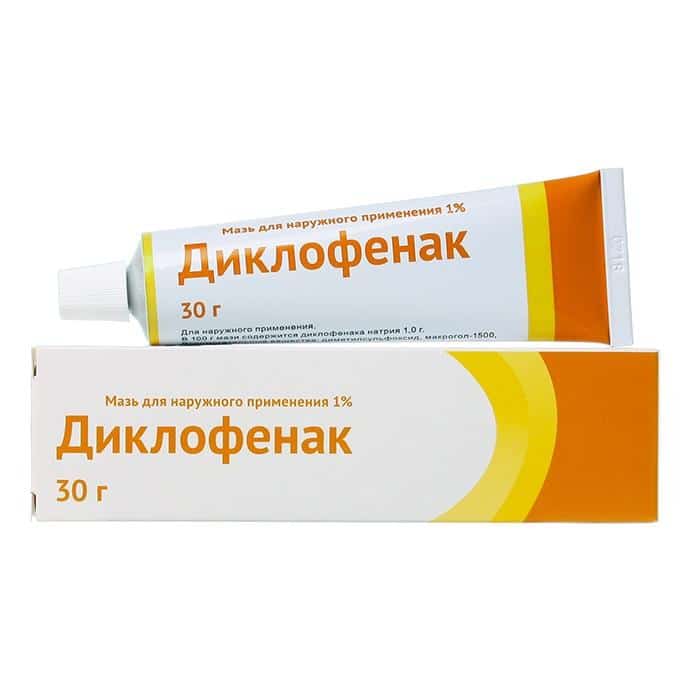
Diclofenac ointment
It is used to relieve pain and inflammation, has an analgesic effect in diseases of the joints and various types of neuralgia. The ointment has a prolonged effect, accumulating in the subcutaneous tissues. This form of release of Diclofenac has a number of advantages:
- can be applied under clothing, absorbed, the ointment does not leave greasy stains;
- penetrates well into tissues through the top layer of skin;
- has a transdermal effect.
Like any drug, ointment has some contraindications:
- individual intolerance to incoming components and non-steroidal drugs
- not used for bronchial asthma;
- inflammatory diseases of the nasopharynx;
- peptic ulcer;
- period of pregnancy and lactation;
- not prescribed to children under 6 years of age.
Diclofenac, like any non-steroidal drug, is not combined with analgesics of other groups.
Injections
Diclofenac for intramuscular administration has a strong anti-inflammatory and analgesic effect. It is used to relieve pain in intercostal neuralgia and trigeminal neuralgia. Has a wide spectrum of action.
"Menovazin"
Thanks to the presence of menthol in the composition, pain is relieved and you feel cool. This ointment for intercostal neuralgia contains a special complex of elements that can effectively cope with pain and inflammation. And this is precisely what is important to remove for patients who have been diagnosed with neuralgia. The ointment contains menthol, benzocaine and procaine. The last two components best block pain impulses, have an anesthetic effect, and menthol irritates nerve endings, helps dilate blood vessels and brings a feeling of coolness.
Medicines
The pathology must be treated with the following drugs:
You can also read: Consequences of intercostal neuralgia
- analgesics (painkillers). The main mechanism of action of this group is the effective elimination of pain - the main symptom of this disease. Experts recommend taking tablets no more than 4 times a day, otherwise you cannot avoid the development of side effects, including the following: impaired renal function, hypotension, allergic reactions. An overdose can cause the following undesirable symptoms: nausea, vomiting, drowsiness, etc. Popular analgesic drugs are: analgin, sedalgin, spasmalgon;
- anti-inflammatory drugs. The peculiarity of this group of drugs is that they not only relieve the inflammatory process, but also effectively combat pain in the intercostal space. The most well-known representatives are the following drugs: diclofenac, ibuprofen. Treatment with non-steroidal anti-inflammatory drugs must be carried out competently, and medications should be taken only after the recommendation of a specialist, as they can cause such unpleasant consequences: headache, nausea, kidney inflammation, etc. The drugs are prescribed by injections or they are used as an ointment. For example, Nimid ointment is popular due to its effectiveness in combating pain and inflammation. Another effective drug is Movalis. The medicine is available in different forms: solution, tablets, suppositories. It copes well with pain;
- muscle relaxants. These medications are capable of relieving muscle spasms, and spasms are the main cause of the development of the disease;
- B vitamins. A lack of vitamins of this group can also cause the development of pathology;
- local anesthetics. The use of blockades based on novocaine or lidocaine is effective even with intense pain;
- sedatives. Drugs like Relanium or Elanium help the brain not react so violently to severe pain;
- sanitization of the oral cavity and nose. This includes the treatment of chronic tonsillitis, sinusitis, caries, etc.;
- physiotherapeutic treatment (electrophoresis, ultrasound, reflexology).
The initial stages of the disease are easily amenable to conservative treatment, so do not delay contacting a doctor
It is important to start treatment in a timely manner, otherwise serious complications may appear, including chronic pain syndrome and limited range of motion.
Turpentine ointment
This remedy works great for intense pain. This drug is considered one of the most accessible and inexpensive. Every person will be able to afford to buy it. The ointment contains purified turpentine and turpentine oil. They have a warming effect and local anesthesia. Thanks to the use of ointment, it is possible to relieve swelling, pain and inflammation. But the best help is a mixture that contains not only turpentine ointment, but also honey, baby cream and bear or badger fats. This composition will help to quickly cope with the symptoms of neuralgia.
Folk remedies for neuralgia
Intercostal neuralgia is a painful disease associated with compression of the nerves located between the ribs. Usually the pain subsides only after using proven folk remedies - ointments, rubbing, baths, medicinal drinks. These pain medications help calm the intercostal nerve endings, relax the intercostal muscles, and relieve inflammation. With a long course of treatment, a person forgets about the symptoms of this disease.
At any of the Russian Roots herbal pharmacies, you can consult with a specialist about the treatment of this disease with folk remedies. Those drugs of natural origin are selected that should help the patient in his particular case.
Treatment of intercostal neuralgia using baths
Only warm water is poured in; if necessary, it is periodically brought to the desired state. The room maintains a comfortable temperature. A sudden penetration of cold air currents or the presence of stable drafts will only worsen your well-being.
The duration of the procedure is up to half an hour. After taking a bath, the patient should lie down in bed, apply heated sand or salt sewn into tight bags to the affected area, and cover with a blanket.
It is advisable to add tinctures or oil preparations used in folk medicine to warm water. You should also pay attention to other recommendations.
- 4 tbsp. l. sage, pour a glass of boiling water. The product is infused for 1 hour, filtered, and poured into the bath. The same volume of sea salt is added. Baths are taken before bed for 10 minutes, no longer.
- Branches with buds, poplar and aspen leaves are mixed in an amount of half a kilogram. The mixture is poured with boiling water, infused, filtered, and added to the bath. The water temperature in the bath is approximately 40 °C. After completing the 15-minute procedure, additional fir oil is rubbed into the sore spot.
Baths are taken every other day. There is no need to rinse after each use, just wipe dry.
Tinctures for oral use for intercostal neuralgia
Some tinctures with alcohol and water are used both for rubbing and for oral administration.
- Mummies at the same time:
- taken orally 15-20 g;
- The alcohol solution is rubbed into the affected areas for 5 minutes.
- Willow bark in a volume of 1 teaspoon is diluted with boiling water and the mixture is allowed to brew for half an hour. The medicine is taken 3-4 times daily.
- A decoction is prepared from aspen bark. Consuming this medicine relieves muscles from tension and pain.
- Chamomile is well known for its anti-inflammatory properties. For neuralgia, an infusion of this plant is prepared. Flowers used - 70 g. The specified mass is poured with a glass of boiling water and continues to boil for 5-7 minutes. The tincture is cooled and filtered. Take this folk remedy 3-4 times a day, each time after meals.
- Immortelle inflorescences (2 tablespoons) are poured with boiling water (half a liter) and left in a thermos for a day. The prepared volume should be drunk during the day.
Methods for treating intercostal neuralgia with compresses
For compresses they most often take:
- Honey, which is applied to the body, first ground with vegetable oil. The top is covered with a film of polyethylene and woolen cloth.
- A compress of 0.5 liters of vodka and 50-70 g of birch buds will have a warming and analgesic effect. This compress should be applied for no more than half an hour.
- The same effect has 200 g of alcohol with rue herb, brought to a powdery state in an amount of 2 tbsp. spoons
- Steamed flax seeds are a good help for pain relief.
- A flatbread consisting of onion juice, steamed honey and beeswax. It relieves pain very well and has a calming effect.
All kinds of rubs and ointments help very well. After applying them, the patient should wrap the sore spot with a warm scarf or handkerchief, then lie down under a blanket.
- Ointments based on snake or bee venoms have been used by healers in almost all countries and at all times. First, they are rubbed into the affected area, after which the sore spot is insulated with a woolen scarf.
- An ancient method of treating neuralgia is a mixture of lard melted in water with lilac leaves and buds ground into powder, and the lard should be four times less than lilac. The resulting mixture is rubbed into sore spots.
- Use of burdock. A freshly cut leaf is applied to the chest with the inner side. The painful area of the body is wrapped in a woolen scarf. In this state, the patient should sleep until the morning.
- A mixture of juices is rubbed into the painful area of the body:
- radishes;
- horseradish.
- Pepper patch is applied to the affected area. Before applying it, the skin is wiped with alcohol;
- Arnica is used. An alcohol solution is prepared and rubbed onto the affected area.
- A mixture is rubbed into the sore spot, which includes:
- Vaseline (2 parts);
- turpentine (1 part).
- A saline solution is being prepared. For half a liter of water use 2 tbsp. l. table salt. The water must be hot. A cloth is soaked in it and applied to the painful area. This place on the body is covered with a warm scarf. The procedure lasts 2-3 hours.
It is advisable for the patient to sleep only on a hard mattress. Then the body, located in a comfortable position all night, will not tense up, the blood vessels will not contract, and the muscles will not compress the nerves.
"Finalgon"
It helps dilate blood vessels, has a warming effect and fights pain. This unique product, produced in the form of an ointment, has been effectively used for the treatment of intercostal neuralgia for many years. This ointment received a lot of positive reviews from those who personally experienced its therapeutic effect. Ointment for intercostal neuralgia helps dilate blood vessels, thanks to this effect, blood flow at the site of the inflammatory process significantly improves. In addition, “Finalgon” has an irritating and warming effect, which, in harmony with the ability to dilate blood vessels, completely relaxes tense muscles; due to this effect, the pressure of muscle fibers on the nerve weakens and the pain syndrome recedes.
Reviews
Attention! The information presented in the article is for informational purposes only. The materials in the article do not encourage self-treatment. Only a qualified doctor can make a diagnosis and give treatment recommendations based on the individual characteristics of a particular patient.
- Neuralgia of the radial nerve of the left hand
- Swelling of the arm after a fracture of the radius after removal of the cast
- Ointment for the knee joint and ligaments
- Tapes for fingers and toes: how to apply, restrictions
"Viprosal"
This drug, presented in the form of an ointment, according to patients, very quickly copes with pain, and it is this that causes the greatest inconvenience to the patient in neuralgia. Thanks to the unique composition of the ointment, it has several effects on the body at once and easily copes with attacks of neuralgia. It contains viper venom, camphor oil, turpentine and salicylic acid. Each of these substances has its own effect, but together they are aimed at eliminating pain, activating the body’s protective functions and removing the causes that caused the malaise. But it is worth remembering that only complex therapy will help cope with such a diagnosis as “intercostal neuralgia.” Treatment at home with ointments is allowed only after consultation with a doctor, because Viprosal has a number of serious contraindications for use: pathologies of the kidneys and liver, exhaustion of the body, brain and coronary insufficiency, and others.
This is only a small fraction of those ointments that will help get rid of the pain and inflammation that accompany neuralgia. But it is better if the doctor selects the ointment, focusing on the causes of the pathology.
Contraindications and adverse reactions
Like all non-steroidal drugs, Diclofenac has a number of side effects. These include:
- bowel dysfunction;
- flatulence;
- feeling of nausea;
- headache;
- allergy;
- general weakness;
- increased blood pressure;
- sleep disturbance, drowsiness.
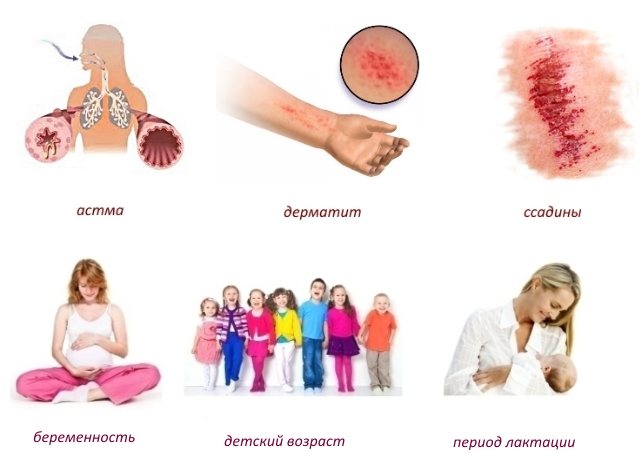
If an adverse reaction occurs, you should consult a doctor to analyze the advisability of taking this medication.
Contraindications include diseases of the digestive and cardiovascular systems, pregnancy, lactation, children under 12 years of age, liver and kidney diseases. Diclofenac should be used with caution in elderly people, with weakened bodies, and in patients suffering from bronchial asthma.
Ointments for intercostal neuralgia: reviews
Intercostal neuralgia is a very serious and painful pathology that simply cannot be tolerated. Immediately when the first pain appears, you have to look for the best remedy to help relieve pain.
According to patient reviews, warming ointments are very helpful for intercostal neuralgia, which cope well with pain, and if you use painkillers in combination with them, the pain does not cause serious suffering.
Those patients who have been examined and whose cause of neuralgia has been identified cope with the disease faster, because all their therapy is based on eliminating the cause, which means that the symptoms go away. But those who self-medicate suffer from symptoms longer.
That is why it is better to immediately seek qualified help if you are diagnosed with intercostal neuralgia. Only a specialist can tell you which ointment will help best in a particular case.
Where can I buy
These recommendations will help overcome the consequences of exacerbation of intercostal neuralgia. All drugs and their individual components can be purchased at Russian Roots herbal pharmacies for people who live in Moscow or nearby areas of the Moscow Region.
You don’t have to drive around the city, but place an order in the Russian Roots online store. The courier delivers the necessary remedy for the disease quickly. Residents of remote regions suffering from this neuralgic disease will receive healing compounds by mail.
Attention! All materials published on our website are protected by copyright. When re-publishing, attribution and a link to the original source are required.
Causes of development of intercostal neuralgia
Timely treatment of the disease allows you to avoid complications and shorten the period of disability.
Treatment of intercostal neuralgia, which is an unpleasant disease, is a rather complex process. A number of reasons determine the development of the pathological condition. These include:
Dikul Valentin Ivanovich told how to overcome problems with the back and joints at home... Read the interview >>
- sudden, awkward movements;
- osteochondrosis of the thoracic axial skeleton, which leads to the destruction of the intervertebral discs or its injury;
- lack of organization of a balanced nutritional diet rich in vitamins, minerals, microelements that are necessary for the health of nerves, muscle fibers, cartilage and hard tissues of the spinal column;
- blows, bruises of the chest, back, rib fractures;
- congenital or acquired pathological deformities of the vertebrae;
- colds and viral infections;
- hypothermia and severe physical exertion;
- diagnosing radiculopathy, vertebral hernia;
- increased interest in drinking alcoholic beverages.
Such reasons can provoke the development of intercostal neuralgia and, as a result, pain syndromes of varying intensity and decreased ability to work. Timely treatment of the disease allows you to avoid complications and shorten the period of disability.
Pain factor in neuralgia
Regardless of the location of the damaged nerve, acute pain is a constant symptom of this disease. In most cases, it occurs suddenly and tends to intensify under any load. The duration of a pain symptom can be several minutes or measured in hours. At night, discomfort often increases.
Pain during neuralgia is localized depending on the location of the damaged nerve. Most often this is the intercostal zone, lower back, neck with discomfort radiating to the clavicle area and frontal with the peritemporal part of the head. And to eliminate this factor in any of the cases, except for trigeminal neuralgia, almost the same painkillers and methods are used.
Dikul Valentin Ivanovich told how to overcome problems with the back and joints at home... Read the interview >>
The need to use ointments for intercostal neuralgia
Neurologists include the use of drugs for external use in the treatment regimen for a pathological condition that develops as a result of compression of the nerve roots in the area of the thoracic vertebrae. The use of ointments, gels, creams, presented in a wide range of types in pharmacy chains, is considered an excellent addition to ongoing drug therapy, massage procedures, physiotherapeutic measures, and physical therapy exercises. The list of main purposes of their purpose includes:
- reducing the intensity of pain and achieving an analgesic effect;
- relieving the inflammatory process in the thoracic axial skeleton;
- eliminating the risk of aggravation of the situation, deterioration of the patient’s general condition, and development of complications;
- minimizing discomfort, discomfort, irritability, nervousness caused by disability;
- relaxation of muscle fibers and relieving additional stress on the inflamed area of the chest and back;
- improvement and strengthening of blood circulation in the tissues of the axial skeleton;
- warming the affected area;
- reducing the severity of compression of nerve endings;
- increasing the level of elasticity of inflamed tissues.
Danger of disease
The prerequisite for the disease is compression of the nerve roots that pass between the ribs, or their severe irritation. Intercostal neuralgia manifests itself with the appearance of powerful pains, which become better with a deep sigh, coughing, sudden movements - bending and turning the body. The disease is one of the most severe and has a lot of nasty consequences, so timely diagnosis and treatment should be carried out by an experienced doctor. This is explained by the fact that in terms of external signs and manifestations, intercostal neuralgia is identical to diseases such as renal colic or pathologies of the cardiovascular system. In order for the patient to quickly get rid of the symptoms of the disease and return to a normal, real form of life, the doctor will select a more suitable medical treatment based on the overall picture of the disease ( this is the state of the body, expressed in the disruption of its normal functioning, life expectancy and its ability to maintain its homeostasis
), the results of radiographic examination, laboratory tests and the general picture of the disease.
It is not necessary to say too much that self-medication is unacceptable, because under the mask of intercostal neuralgia the symptoms of other, most dangerous diseases can be hidden, and without the help of others, the medications used can produce various side effects (if the dose is incorrectly calculated or if there is a tendency to allergic reactions on product components).
In the first days of the disease, the patient, in addition to urgently contacting a doctor, can be advised to completely rest, abstain from work, and sleep on a hard and level surface, with the exception of large pillows.
The people were taken aback! Joints will recover in 3 days! Attach...
Few people know, but this is exactly what heals joints in 7 days!
Features of the use of ointments for intercostal neuralgia
Treatment of intercostal neuralgia with ointments, gels, and creams has a number of positive aspects. These include simplicity and ease of use, economical consumption of the drug, achieving the expected result in the shortest possible time, accessibility to all segments of the population, elimination of disease symptoms and pain.
A federal program to rid the population of musculoskeletal diseases has been launched! It's hard to believe, but an effective drug is funded by the Ministry of Health. Scary statistics show that banal crunching and pain in the joints often result in disability! To avoid this you need to take a cheap remedy...
An important point in the treatment of neurological pathology is strict adherence to the instructions from the manufacturer attached to the drug, recommendations, prescriptions of the attending physician, bed rest during an exacerbation of the disease on a sufficiently elastic and hard mattress, and the mandatory exclusion of drafts. Also, after applying ointments, it is recommended to wrap the inflamed areas of the back and chest with warm items of clothing, accessories in the form of shawls, scarves. Proper treatment with external agents for intercostal neuralgia is the key to achieving a positive result, returning to a normal lifestyle as soon as possible, and also helps prevent the risk of relapses. The timing of use of ointments is determined by the attending physician.
Painkillers for neuralgia
The main group of drugs used for neuralgia pain are non-steroidal anti-inflammatory tablets. They not only eliminate obvious physical discomfort, but also effectively reduce the inflammatory process. Also, this group of drugs can lower high body temperature that appears when peripheral nerves are damaged.
All existing painkillers used for neuralgia can be divided into several groups. According to the form of release and method of use, neuralgic drugs are as follows:
- pills;
- injections for injections;
- ointments and gels;
- candles.
The choice of a specific drug for neuralgia, as well as its dosage, should be made only by the attending physician, taking into account all the characteristics of the patient’s body. When selecting a dosage form, the general health of the patient and the presence of high sensitivity to any components of the drugs must be taken into account.
Considering the speed of manifestation of the analgesic effect, as well as its duration, the more preferable medications for neuralgia are tablets, suppositories and injections for injections. Ointments and gels are mainly used as an additional auxiliary element. Their anti-inflammatory effect is significantly superior in quality to the ability of these drugs to eliminate spasms and pain.
Pills
Painkillers for neuralgia in tablet form are quite effective, but their use is not always possible. The presence of problems with the gastrointestinal tract, as well as liver and kidney dysfunction, are often direct contraindications to taking drugs of this type.
Ketorolac has many analogues and has an excellent analgesic effect.
The most effective tableted neuralgic drugs include the following drugs:
- Ketorolac. Analogues of this drug are tablets Toradol, Ketocam, Dolak, Ketofril and Ketanov;
- Zaldiar, which contains the active ingredients tramadol and paracetamol;
- Flamax;
- Ibuprofen. It is contained in various dosages by the painkillers Nurofen, Ibusan, Nalgesin, Brufen;
- Paracetamol.
Despite the high popularity of the painkiller Diclofenac, which also belongs to the non-steroidal anti-inflammatory drugs, it is better to avoid using it. This drug not only provides a short-lived and weak analgesic effect, but also significantly increases the risk of developing gastrointestinal ulcers.
A federal program to rid the population of musculoskeletal diseases has been launched! It's hard to believe, but an effective drug is funded by the Ministry of Health. Scary statistics show that banal crunching and pain in the joints often result in disability! To avoid this you need to take a cheap remedy...
Injections for injections
One of the most effective means of relieving pain for various types of neuralgia is intramuscular injections. The effect of taking drugs in this form manifests itself quickly enough and has virtually no negative impact on the patient’s internal organs and systems.
One of the most effective means of relieving pain for various types of neuralgia is intramuscular injections.
Painkillers administered by injection are absorbed by the body much better than tablets. That is why during their use it is necessary to follow the dosage and treatment regimen prescribed by the attending physician. The principle of drug administration must also be observed, since some analgesic anti-inflammatory injections require slow administration to activate the active substance, while others must be warmed to room temperature.
The most effective for damage to peripheral nerves are the following painkillers in the form of intramuscular injections:
- Ketanov;
- Lornoxicam and its analogue Xefocam;
- Toradol;
- Flamax;
- Meloxicam, an analogue of which is Movalis;
- Flexen.
If emergency one-time use is necessary, in the absence of the painkillers listed above, injections based on analgin can be used for neuralgia. These include Spazgan, Trigan, Baralgin and Analgin itself, which in combination with Diphenhydramine is used for pain relief in ambulances. However, frequent use of analgesics is unacceptable due to the high risk of developing agranulocytosis and other pathological changes in blood composition.
Ointments and gels
Anesthetic ointments and gels help activate the regenerative properties of tissues
This type of drug is used exclusively in combination with other painkillers in the form of tablets, injections or suppositories. As an independent pain reliever for neuralgia, ointments and gels are rather low in effectiveness. However, their long-term systematic use has a persistent anti-inflammatory and some antispasmodic effect. Also, such ointments and gels help activate the regenerative properties of tissues, so they are used both at the stage of pain relief and in the process of restoring damage due to neuralgia.
The most effective ointments and gels that can eliminate pain from neuralgia are the following drugs:
- Ketoprofen;
- Nimesulide;
- Ketonal;
- Viprosan;
- Apizartron;
- Finalgon;
- Myoton.
Many of these drugs contain bee or snake venom. Based on this, before starting to use an ointment or gel that relieves inflammation and pain due to neuralgia, you should definitely consult a doctor and exclude all contraindications. In case of increased sensitivity of the patient’s body to most components of pain-relieving ointments and gels, he is most often prescribed Myoton, based on herbal components. However, its effectiveness is significantly lower than that of other drugs in this group.
Candles
One of the fastest ways to relieve pain from various types of peripheral nerve damage is the use of special rectal suppositories. The most effective of them include:
- Okie;
- Voltaren.
In addition to the fact that these suppositories quickly relieve pain, they also effectively relieve inflammation and lower fever. But, despite the speed of the body’s reaction to rectal suppositories, they are rarely used in the treatment of neuralgia. The reason for this is the inconvenience of their use, including mandatory long-term bed rest.
In general, in the process of treating neuralgia, types of painkillers can be combined with each other to achieve a quick positive effect. However, strict medical supervision is a prerequisite for safe and effective therapy.
Have you tried all possible remedies, but the pain does not go away and prevents you from living a full life? Apparently yes, since you are reading these lines and not playing with your children and grandchildren.
Stop adjusting to back and joint pain, we strongly recommend reading Dr. Dikul’s article on how you can get rid of osteochondrosis and back pain... Read the article >>
